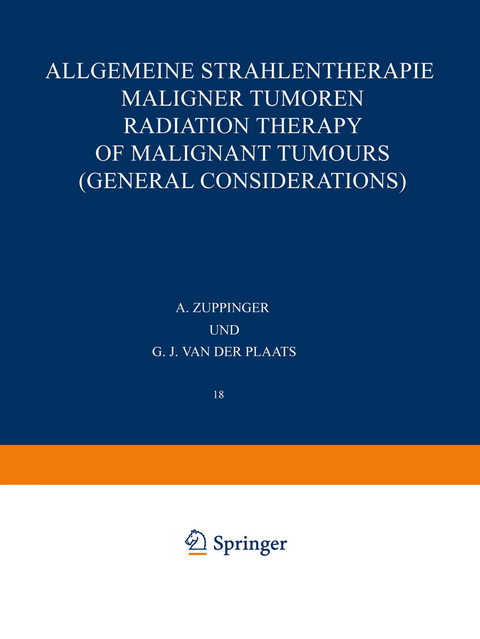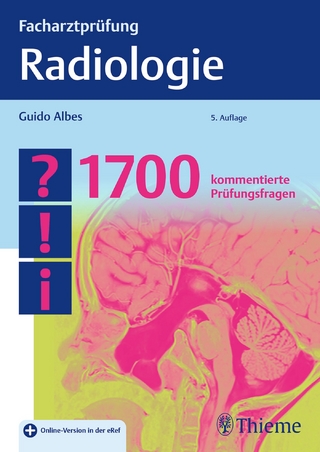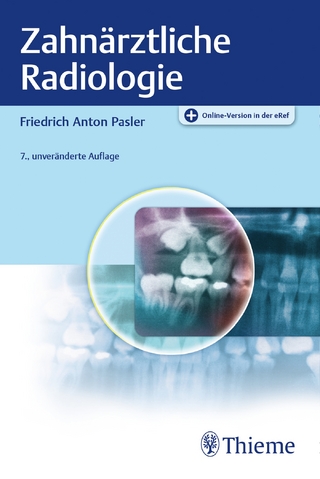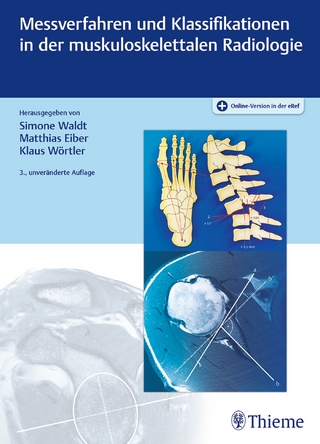
Allgemeine Strahlentherapie Maligner Tumoren
Springer Berlin (Verlag)
978-3-642-99925-3 (ISBN)
A. Gut-und Bösartigkeit von Tumoren..- I. Einleitung.- II. Geschichtliche Entwicklung der Hauptbegriffe.- III. Gut- und Bösartigkeit von Tumoren als Gegenstand der Grundlagenforschung.- 1. Bemerkungen zur experimentellen Tumorforschung.- 2. Eigenschaften der Tumoren.- a) Vorwiegend morphologische Eigenschaften.- ?) Zellbild.- ?) Chromosomen und Zellteilung.- ?) Gewebebild.- ?) Wachstum und Ausbreitung.- ?) Versuche zur Integration morphologischer Merkmale.- b) Vorwiegend funktionelle Eigenschaften.- ?) Stoffwechsel.- ?) Antigenität.- c) Besondere Tumor-Wirt-Probleme.- ?) Kachexie.- ?) Progression.- ?) Regression.- d) Gesamtbeurteilung der Tumoren.- IV. Gut- und Bösartigkeit von Tumoren als Gegenstand der klinischen Medizin.- 1. Lokalisationsbedingte Lebensbedrohung durch gutartige Tumoren.- 2. Zwischenbereich von Gut- und Bösartigkeit: bedingte Gutartigkeit und Halbbösartigkeit.- V. Abschluß.- VI. Zusammenfassung.- Literatur.- B. Allgemeine Richtlinien der Tumorbehandlung..- I. Die Tumorzelle ist der Träger der Tumor-Erkrankung.- II. Nur die vollständige Entfernung oder die restlose Zerstörung des Tumors sind heute bewiesene Voraussetzungen für die bleibende Tumorfreiheit.- III. Die erste Behandlung entscheidet über das Schicksal des Geschwulstträgers.- IV. Operation und Bestrahlung wirken im Effekt gleichartig auf den Tumor, sie sind deshalb keine rivalisierenden Behandlungsverfahren.- V. Kenne die Grenzen jedes Behandlungsverfahrens !.- VI. Der Strahlentherapeut soll ein behandelnder Arzt sein !.- Literatur.- C. Organization of the fight against cancer..- 1. Introduction.- 2. Professional programs.- 3. Prevention.- 4. Diagnosis.- 5. Surveys.- 6. Treatment.- 7. Follow-Up.- 8. Lay programs.- 9. Special facilities.- a) Cancer detection centers.- b) Cancer clinics.- c) Cancer institutes and hospitals.- d) Cancer-phobia incidental to cancer detection propaganda.- 10. Agencies in other countries.- a) Sweden.- b) Denmark.- c) Finland.- d) Great Britain.- e) U.S.S.R.- f) France.- General References.- C I. Die Organisation der Krebsbekämpfung in der Schweiz..- C II. Die Organisation der Krebsbekämpfung in Dänemark..- C III. Organization of cancer control in Poland..- 1. Historical outline.- 2. Organization and objectives.- 3. The present oncologic organization of cancer hospital and detection centers in Poland.- 4. Service provided by the oncological network.- 5. Preventive action.- 6. Care of the incurable patients.- 7. Training of the staff.- 8. Scientific information.- 9. Public education.- 10. Statistics.- References.- C IV. Die Organisation der Krebsbekämpfung in Nordrhein-Westfalen. Aufgaben, Wege und Wandlung..- 1. Die Laienaufklärung.- 2. Die ärztliche Fortbildung.- 3. Mitteilungsdienst.- 4. Bibliothek.- 5. Die Konsiliarstellen.- 6. Die cytologischen Zentren.- 7. Die Außenstationen.- 8. Die Klimastationen.- 9. Die Zentralstelle.- a) Untersuchungen über krebstypische Eiweißkörper bei Tumoren und ihre molekulare Struktur.- b) Untersuchungen über den Einfluß zellwachstumshemmender Medikamente auf den Stoffwechsel von Tumoren.- c) Wirkungsmechanismus von Medikamenten.- d) Untersuchungen über Virus-Leukämien.- e) Experimente mit Cytostaticis.- f) Untersuchungen über eine kombinierte zellwachstumshemmende Wirkung.- 10. Wissenschaftsrat.- 11. Das klinische Forschungsinstitut in Essen.- 12. Der Westfälische Verein für Krebs- und Lupusbekämpfung.- C V. Information regarding the organization to combat cancer in Italy..- 1. The Italian league against tumours.- 2. Research and treatment institutes.- a) Tumour institutes.- b) Hospitals with special tumour departments.- c) Provincial centres for the diagnosis and treatment of tumours.- 3. Scientific research.- 4. Teaching.- D. Statistics in cancer..- I. History of Methods.- 1. General.- 2. Autopsy statistics.- 3. Prevalence.- 4. Mortality statistics.- 5. Registration.- 6. Interview studies.- a) Retrospective studies.- b) Prospective studies.- 7. Genetical statistics.- a) Pedigree studies.- b) Twin studies.- c) The quantitative significance of genetics in cancer.- 8. International coordination.- a) World Health Organization.- b) Non-governmental agencies.- ?) Nomenclature and staging.- ?) Inter-regional comparison.- II. General theories on cancer based on statistics.- 1. General disposition.- a) Heredity.- b) Cramer’s theory.- c) Multiple cancer.- d) Negative correlation with atherosclerosis.- 2. Mutation theory.- III. Various malignant neoplasms.- 1. Upper respiratory and digestive tracts.- a) Tobacco smoking.- b) Chewing of tobacco (Betel).- c) Alcohol.- d) Syphilis.- 2. Alimentary canal.- a) Oesophageal carcinoma.- ?) Occupational distribution.- ?) Social distribution.- ?) International distribution.- ?) Genetical studies.- ?) Syphilis.- ?) Tobacco.- b) Gastric carcinoma (International statistics).- ?) Classification.- ?) Reviews from various countries.- ?) International differences.- ?) Quality of diagnosis.- ?) Reality of decrease.- ?) Social distribution.- ?) Genetical studies.- ?) General evaluation.- 3. Bronchial carcinoma.- a) Demographical studies of increase.- ?) Reality of increase.- ?) Sex.- ?) Socio-economical status.- ?) Age distribution analyzed by Cohorts.- ?) Urban/rural ratio.- ?) National differences.- ?) Histological type.- b) Interviews.- ?) Retrospective studies.- ?) Prospective studies.- ?) Special results from interview studies.- c) Conclusions.- 4. Tumours of the urinary bladder.- a) Occupational tumours.- b) Bilharziasis.- c) Tobacco smoking etc.- 5. Mammary carcinoma.- a) History.- b) Age.- c) Gynecological record.- d) Trauma.- e) Laterality.- f) Heredity.- g) International comparisons.- h) General.- 6. Uterine cancer.- a) Pre-invasive cervical carcinoma.- b) Heredity and race.- ?) Heredity.- ?) Race.- c) Socio-economic conditions.- d) Syphilis.- e) Sexual activity.- ?) Monastic state.- ?) Reproduction.- ?) Sexual activity, sensu strictiori.- f) Jewish rite.- ?) Rarity of cervical carcinoma.- ?) Circumcision.- ?) Periods of abstention.- 7. Leukaemias and allied diseases.- a) General.- b) Age curves.- c) Children.- ?) Chromosomal aberrations.- ?) African lymphosarcoma.- d) Ionizing radiation.- e) Virus.- f) Groups of cases.- IV. Therapeutic statistics.- V. Future.- References.- E. Die strahlentherapeutische Klinik..- 1. Prinzipielle Gesichtspunkte.- 2. Wesentliche Organisationsprobleme.- 3. Die Organisation der Klinik.- a) Ankunft des Patienten.- b) Die Poliklinik.- c) Die Bettenstation.- d) Das klinische Laboratorium.- e) Das Photolaboratorium.- f) Die Operationsabteilung.- g) Die Behandlungsabteilungen.- ?) Konventionelle Röntgenbestrahlung.- ?) Hochvoltabteilung.- ?) Abteilung für radiogynäkologische intrakavitäre Bestrahlung.- ?) Isotopenabteilung.- ?) Behandlungsplanung.- h) Die Statistikabteilung.- i) Das Archivsystem.- k) Die Bibliothek.- 1) Die Fürsorge.- 4. Der Arbeitseinsatz des radiophysikalischen Zentrallaboratoriums.- 5. Unterricht für Studenten, Ärzte und Spezialisten.- 6. Forschung. Radiobiologie.- 7. Andere strahlentherapeutische Kliniken.- 8. Zusammenfassung.- Literatur.- F I. General tumour staging..- 1. Classification.- 2. Staging.- 3. Clinical staging — its rules and critera.- 4. The T.N.M. system of staging.- a) The primary tumour — T.- b) Regional lymph nodes — N.- c) Distant metastases — M.- 5. The staging of certain cancers.- a) Cervix uteri.- b) The breast.- c) The larynx.- d) The pharynx.- e) The nasopharynx.- f) The oropharynx.- g) The hypopharynx.- h) Lip and buccal cavity.- 6. Other sites.- a) The urinary bladder.- b) Thyroid gland.- c) The oesophagus.- d) The stomach.- e) The colon.- f) The rectum.- g) The lung.- References.- F II. Stadieneinteilung der gynäkologischen bösartigen Tumoren..- 1. Allgemeines über die Stadieneinteilung.- 2. Das Carcinoma cervicis uteri.- a) Definition.- b) Stadieneinteilung des Carcinoma cervicis uteri.- 3. Das Carcinoma corporis uteri sowie die Nebengruppen: das Carcinoma corporis et endocervicis, das Carcinoma uteri et ovarii und das Carcinoma pelvis.- a) Definitionen.- b) Stadieneinteilung des Carcinoma corporis uteri.- 4. Das Carcinoma vaginae sowie die Nebengruppen: das Carcinoma vaginae et cervicis und das Carcinoma vaginae et vulvae. Ferner das Carcinoma urethrae.- a) Definitionen.- b) Stadieneinteilung des Vagina-Carcinoms.- 5. Das Carcinoma vulvae.- a) Definition.- b) Stadieneinteilung des Carcinoma vulvae.- 6. Das Carcinoma ovarii.- a) Definition.- b) Stadieneinteilung des Carcinoma ovarii.- 7. Allgemeine Fragen der Stadieneinteilung gynäkologischer Carcinome.- a) Umfassende Klassifizierungssysteme.- b) Der mikroskopische Nachweis.- c) Die zulässigen Untersuchungsmethoden.- d) Über die Genauigkeit bzw. die Grenzen der Stadieneinteilung gynäkologischer Carcinome.- Literatur.- G. Histologic and biologic response of tumours to irradiation..- I. Morphologic changes in irradiated tumours.- 1. Introduction.- 2. Cytologie changes in irradiated tumour cells.- a) The cell as a whole.- ?) Temporary effects.- ?) Permanent effects.- b) Details of cellular changes.- ?) Nuclear changes.- ?) Cytoplasmatic changes.- c) Interpretation of cellular changes.- 3. Histologie changes in irradiated tumours.- a) Regressive changes in tumour parenchyma.- b) Roentgen irradiation and differentiation of neoplastic cells.- c) Stroma and vessels in tumour tissue.- ?) Morphologic changes.- ?) Interpretation of stromal and vascular changes.- 4. The significance of histologie studies in radiation therapy.- II. Biologic reactions in irradiated tumours.- 1. Introduction.- 2. The inherent radiosensitivity of tumour cells.- a) Radiosensitivity of cell populations in vitro according to Puck.- b) Radiosensitivity of cells in vivo and in vitro.- c) Comments.- 3. Reciprocal effect of irradiated and non-irradiated cells.- a) Normal tissue.- b) Tumour tissue.- 4. Immunity and radiation response.- a) Immune factors on transplantation of irradiated tumours.- b) Experimental evidence of variation in radioresponse by immune factors.- c) Morphologic evidence of immune factors in irradiated tumours.- 5. Induced radioresistance.- a) Introduction.- b) General considerations on the adaptation of neoplastic cells — progression of tumours.- c) Induced radio-resistance of normal cells.- d) Induced radioresistance of tumours.- ?) Radioresistance due to changes in the neoplastic cells.- ?) Effect of stroma and host-tumour relationship.- Experimental evidence.- Pathologic-anatomic and clinical experience.- Metabolic and biochemical observations.- e) Summary.- 6. Irradiation and metastases.- References.- H. Die Strahlensensibilität der Tumoren..- I. Einleitung.- 1. Einige Eigenschaften der Tumorzellen, die dazu beitragen, ihre Strahlenempfindlichkeit besser zu verstehen.- 2. Die ionisierenden Strahlungen.- 3. Die Art der Anwendung der ionisierenden Strahlung.- 4. Versuch der klinischen Definition der Strahlenempfindlichkeit der Geschwülste.- II. Zusammenstellung der Effekte der ionisierenden Strahlung bei normalen und tumorösen Zellen.- 1. Celluläre Strahlenschäden.- 2. Unterteilung der Wirkungen.- 3. Der strahlenempfindliche Zeitpunkt während der Mitose.- 4. Wirkungsweise der ionisierenden Strahlen.- III. Übertragung spezieller Kenntnisse der Strahlenempfindlichkeit der normalen Gewebe des Menschen auf Krebsgewebe.- 1. Notwendigkeit, die Strahlenempfindlichkeit der gesunden Gewebe zu kennen.- 2. Die Bedeutung der verschiedenen Strahlenläsionen des Bindegewebes für die Beurteilung der Strahlenempfindlichkeit.- 3. Strahlenempfindlichkeitsskala der gesunden Gewebe.- IV. Die Bedeutung der histologischen Untersuchung für die Beurteilung der Strahlenempfindlichkeit der Tumoren.- 1. Allgemeine Bemerkungen über den Wert und die Grenzen der histologischen Untersuchung.- a) Der klinische Befund.- b) Der statistische Befund.- c) Der histologische Befund.- 2. Die histologische Untersuchung als Kriterium zur Beurteilung der Strahlensensibilität verschiedener Tumorgewebe.- 3. Einteilung verschiedener Tumorgewebe nach ihrer Strahlenempfindlichkeit.- 4. Die histologische und cytologische Untersuchung als Maßstab für die Strahlensensibilität bei verschiedenen Formen der gleichen Tumorart.- a) Bedeutung des ernährenden Stromas.- b) Bedeutung der Gewebe- und Zellenmorphologie.- c) Bedeutung der Serienbiopsie vor, während und nach der Strahlenbehandlung.- d) Bedeutung des DNS-Gehalts im Kern.- 5. Bedeutung der Cytodiagnostik bei der Beurteilung der Strahlensensibilität der Tumoren.- V. Beurteilung der Strahlensensibilität von anderen Kriterien aus als denjenigen der Histologie.- 1. Alter und Geschlecht des Patienten.- 2. Allgemeinstatus.- 3. Die Superinfektion.- 4. Anamnestische Angaben.- 5. Sitz des Tumors.- a) Der Ausgangspunkt des Tumors.- b) Das Tumorbett.- c) Die Radioresistenz.- d) Die therapeutische Zugänglichkeit.- e) Der makroskopische Aspekt des Tumors.- f) Die Ausdehnung des Tumors.- ?) Das Gesamtvolumen.- ?) Die lokale Ausdehnung.- ?) Die Infiltration des Knorpels.- ?) Die regionären Drüsenmetastasen.- ?) Die Fernmetastasen.- g) Die Gefäßversorgung.- h) Die Radioimmunisation.- VI. Änderung der Strahlensensibilität der Geschwülste durch Faktoren, die vom Radiotherapeuten abhängen.- 1. Die Änderungen der Strahlensensibilität durch Beeinflussung des Allgemeinstatus oder des lokalen Tumorstatus.- 2. Beeinflussung der Strahlensensibilität durch Medikamente.- a) Hormonale Beeinflussung.- b) Kombination mit Vitaminen.- c) Die Chemotherapie im engeren Sinn und Bestrahlung.- Zusammenfassung.- Literatur.- J. Palliative radiotherapy and the treatment of advanced or incurable cancer..- I. Palliative radiotherapy.- 1. General background of the problem.- a) Biological basis of palliative radiotherapy.- b) Indications and limitations of palliative treatment of cancer and neoplastic diseases by radiation.- c) Equipment and techniques of palliative radiotherapy.- ?) Conventional equipment.- ?) Linear accelerators, betatrons and units with a high charge of radioelements.- ?) The radioisotopes.- d) Dosage, duration and special techniques in palliative radiotherapy.- ?) Treatment of a single tumour or a limited number of tumours.- ?) Multiple and disseminated tumours.- ?) Whole-body irradiation.- ?) Regional irradiation.- ?) Dosage and techniques in the administration of isotopes.- ?) Isotopes for irradiation of the pituitary.- e) Surgery and palliative radiotherapy.- ?) Surgical excision.- ?) Surgery of access.- ?) Deviation or decompression surgery.- ?) Reparative surgery.- f) Chemotherapy and palliative radiotherapy.- ?) The principal chemotherapeutic agents and their mode of action.- ?) The place and the indications of chemotherapy in palliative radiotherapy.- ?) Protection and restoration of the bone marrow and intestinal mucosa.- g) Hormone therapy and palliative irradiation.- ?) The basis of hormone therapy.- ?) The role of hormone therapy in palliative radiotherapy.- II. The palliative treatment of the principal tumours.- 1. Tumours of the skin.- a) Squamous-cell epithelioma.- b) Basal-cell epithelioma.- c) Melanomas.- d) Rare tumours.- 2. Tumours of the upper respiratory and digestive passages.- a) Epithelioma of the upper respiratory passages.- b) Sarcoma of the upper respiratory passages.- c) Palliative treatment of tumours of the salivary glands.- d) Cancer of the hypopharynx.- e) Cancer of the larynx.- 3. Cancer of the lung.- a) Operable cancer of the lung.- b) Inoperable cancer of the lung.- 4. Tumours of the alimentary canal.- a) Cancer of the oesophagus.- b) Cancer of the stomach.- c) Tumours of the small intestine and of the colon.- d) Tumours of the rectum.- 5. Cancer of the urinary tract.- a) Cancer of the kidney.- b) Cancer of the bladder.- 6. Cancer of the genitalia.- a) Cancer of the uterus — cancer of the cervix of the uterus.- b) Cancer of the body of the uterus.- c) Cancer of the vagina and of the vulva.- d) Cancer of the ovary.- e) Cancer of the breast.- 7. Cancer of the genitalia in males.- a) Tumours of the testicle.- b) Cancer of the prostate.- c) Cancer of the penis.- 8. Cancer of the thyroid.- a) Functional thyroid cancer.- b) Non-functional cancers.- 9. Cancer of the haematopoietic organs.- a) Acute leukaemia.- b) Chronic lymphatic leukaemia.- c) Chronic myeloid leukaemia.- d) Multiple myeloma.- e) Hodgkin’s disease.- f) Lymphosarcoma.- g) Reticulosarcoma.- 10. Neoplasm of bone and soft tissues.- a) Sarcoma of bone.- b) Sarcoma of the soft tissues.- 11. Cerebral tumours.- 12. The treatment of metastases.- a) Metastases spread via the lymphatics.- ?) Lymph node metastases of low or moderate radiosensitivity.- ?) Glandular metastases from tumours of high radiosensitivity.- ?) Treatment of glandular masses in the mediastinum.- ?) Diffuse lymphatic infiltration.- b) Blood-borne metastases.- ?) Pulmonary metastases.- ?) Liver metastases.- ?) Cerebral metastases.- ?) Bony metastases.- ?) Technique of treatment of bone metastasis of breast cancer.- ?) Multiple metastases.- ?) Solitary metastases.- ?) Sterilisation.- ?) Hypophysectomy.- ?) Generalised bony metastases from cancer of the prostate.- c) Treatment of pleural and peritoneal metastases.- ?) Pleural metastases.- ?) Peritoneal metastases.- III. The care and treatment of patients who have incurable cancer or who are in the terminal stages of the disease.- 1. General.- 2. Cancer cachexia.- 3. Treatment of the chief causes and manifestations of cancer cachexia.- a) Haemorrhage and anaemia.- b) Infection.- c) Pain.- d) Gastro-intestinal symptoms and malnutrition.- 4. Other forms of anti-tumour treatment.- a) Hormone treatment.- b) Chemotherapy.- ?) Local treatment by chemotherapy.- ?) Nourishment in the terminal phase of cancer.- IV. Medical care before and after irradiation.- 1. Preparation of patients for radiotherapy.- a) Infection.- b) Anaemia.- c) Malnutrition and its consequences.- d) Heart failure. Risk of asphyxia and of obstruction.- e) Local measures preceding radiotherapy.- 2. Medical care during irradiation.- a) Radiosensitization.- b) The radioprotectors.- c) Radiation sickness.- d) Intercurrent infection.- 3. Medical care after irradiation.- a) Treatment of local reactions.- ?) Skin reactions.- ?) Mucous membrane reactions.- ?) The reactions of the connective tissue and of its derivates.- b) General medical treatment after irradiation.- ?) Treatment of changes in the haematopoietic organs following irradiation.- ?) Diet after irradiation.- ?) Sea and mountain air.- ?) Psychosomatic treatment of irradiated patients.- K. Strahlentherapie bei Tieren..- I. Einleitung.- II. Die geschichtliche Entwicklung der Strahlentherapie in der Tierheilkunde.- 1. Die erste Periode.- 2. Die zweite Periode.- 3. Die dritte Periode.- III. Therapieanlagen für Haustiere.- 1. Apparaturen.- 2. Behandlungstische.- a) Für kleine Haustiere.- b) Für große Haustiere.- IV. Die biologischen Grundlagen der klinischen Strahlentherapie bei Tieren.- 1. Das Erythem und die Epilation bei kleinen und großen Haustieren.- 2. Strahlenschäden und Strahlenschutz.- V. Indikationen für die Verwendung ionisierender Strahlen in der Tiermedizin.- 1. Haut.- a) Akute, subakute und chronische Entzündungen.- ?) Acanthosis nigricans.- ?) Acarusräude.- ?) Acne.- ?) Dermatosen.- ?) Furunkulose.- ?) Phlegmonen und Pyodermien.- ?) Seborrhoe.- ?) Sycosis vulgaris.- ?) Widerristschäden.- b) Narbenveränderungen der Haut.- ?) Keloide.- ?) Keratosen.- c) Fungusinfektionen.- ?) Aktinomykose.- ?) Botryomykose.- ?) Streptotrichose.- d) Gutartige Tumoren.- ?) Granulome.- ?) Hämangiome.- ?) Hufkrebs.- ?) Warzen.- e) Bösartige Tumoren.- 2. Unterhautzellgewebe, Muskeln, Sehnen, Gelenke und Knochen.- a) Unterhautzellgewebe, Muskeln und Sehnen.- ?) Akute und chronische Entzündungen.- ?) Gutartige Tumoren.- ?) Bösartige Tumoren.- ?) Varia.- b) Knochen und Gelenke.- ?) Akute und chronische Entzündungen.- ?) Tumoren.- 3. Leukämien.- 4. Augen.- 5. Nasennebenhöhlen und Gehörapparat.- a) Nasennebenhöhlen.- b) Gehörapparat.- 6. Speicheldrüsen.- 7. Schilddrüse.- 8. Mundhöhle und Gastrointestinaltrakt.- a) Lippen.- b) Tonsillen.- c) Anus und Rectum.- 9. Urogenitalapparat.- a) Blase.- b) Prostata.- c) Genitalapparat.- ?) Sterilisation.- ?) Uterus und Cervix.- ?) Vagina.- VI. Schlußbetrachtung.- VII. Literatur.- Namenverzeichnis — Author Index.
| Erscheint lt. Verlag | 22.2.2012 |
|---|---|
| Reihe/Serie | Handbuch der medizinischen Radiologie Encyclopedia of Medical Radiology ; 18 |
| Mitarbeit |
Mitglied der Redaktion: A. Zuppinger, G.J. van der Plaats |
| Verlagsort | Berlin |
| Sprache | englisch; deutsch |
| Maße | 210 x 279 mm |
| Gewicht | 1561 g |
| Einbandart | kartoniert |
| Themenwelt | Medizinische Fachgebiete ► Radiologie / Bildgebende Verfahren ► Radiologie |
| Medizinische Fachgebiete ► Radiologie / Bildgebende Verfahren ► Strahlentherapie / Strahlenschutz | |
| Schlagworte | malignant tumours • Maligner Tumoren • Radiation • Strahlentherapie • Strahlentherapie / Radiotherapie • Tumoren • Tumours |
| ISBN-10 | 3-642-99925-5 / 3642999255 |
| ISBN-13 | 978-3-642-99925-3 / 9783642999253 |
| Zustand | Neuware |
| Informationen gemäß Produktsicherheitsverordnung (GPSR) | |
| Haben Sie eine Frage zum Produkt? |
aus dem Bereich


